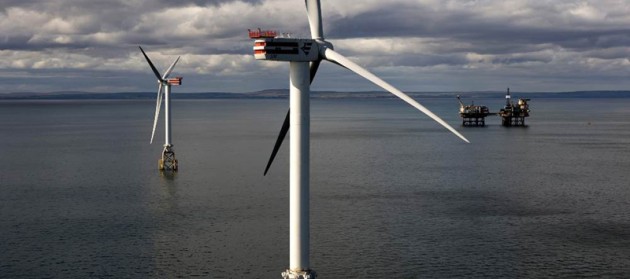The Crown Estate says offshore wind energy is on course to double its capacity by 2020
The Crown Estate has published two reports that reveal offshore wind energy is on course to double its capacity by 2020 to 10 GW or more.
This would make it around 10 per cent of the UK’s electricity demand.
The reports published today at the Global Offshore Wind 2014 conference include the ‘Offshore wind operational report 2014’, which highlights the sectors continuing growth and ‘Sharing lessons learned and good practice in offshore transmission’,which sets out a pathway to cost reduction which will help unlock the sector’s potential.
Offshore wind operational report 2014
Commenting in the report, the Ed Davey MP, Secretary of State for Energy and Climate Change said: ‘The UK is the number one country in the world for offshore wind, supporting green jobs and growth as well as strengthening our energy security.
‘We have already attracted over £30billion worth of investment in renewable technologies since 2010. Our ambitious electricity market reforms provide investors with the long-term certainty they need.’
Huub den Rooijen, head of offshore wind at The Crown Estate said: ‘There have been a number of significant milestones in 2014 for offshore wind including a total of £750 million industry investment announced.
‘With around 1,465 wind turbines in operation or under construction and nearly 4 GW in operation it is fair to say the industry is coming of age.
‘The certainty afforded by the conclusion of Electricity Market Reform and continued cost reduction and investment means that offshore wind is on course to provide around 10 per cent of the UK’s electricity demand by 2020.’
Highlights from the Offshore wind operational report
-
Generation from offshore wind reached an unprecedented 11.5TWh in 2013. This equates to 3.3 per cent of UK electricity demand or enough to power 2.7 million homes.
-
Over 2013 UK wind farms delivered a 37.7 per cent capacity factor for the year as a whole – the highest portfolio average ever achieved (counting the output only from wind farms fully operational at the start of 2013).
-
In 2013, over 6,800 people were employed in the offshore wind sector – more than doubled since 2010.
-
Offshore wind generation has seen year on year growth of 53 per cent, consistent with the average annual growth of 55 per cent over the past 10 years.
-
Four wind farms – London Array, Greater Gabbard, Sheringham Shoal and Thanet – accounted for half the production in 2013.
-
London Array was the first offshore wind farm in the world to achieve an annual output of more than 2TWh in a single year, approximately 17 per cent of the UK’s 2013 generation from offshore wind, despite not being fully commissioned until April 2013.
-
On 23 February 2014, offshore and onshore wind power combined accounted for 17 per cent of electricity demand on that day and 11 per cent across the entire month.
The report also includes updates on community engagement activities, measuring and understanding windiness, transmission and sustainability measures.
The report also emphasized the importance in sharing lessons learned and good practice in offshore transmission’, and outlines how the sector can take a more structured approach to the way in which knowledge is shared, including a proposed ‘knowledge hub’ for information sharing.
Huub den Rooijen added: ‘Given the volume of offshore wind capacity already connected and the expected future capacity, there is a valuable opportunity to better understand the challenges faced on offshore transmission projects.
‘By taking a more collaborative approach industry can capture this knowledge for the benefit of future projects as a way of reducing costs and risk.’




